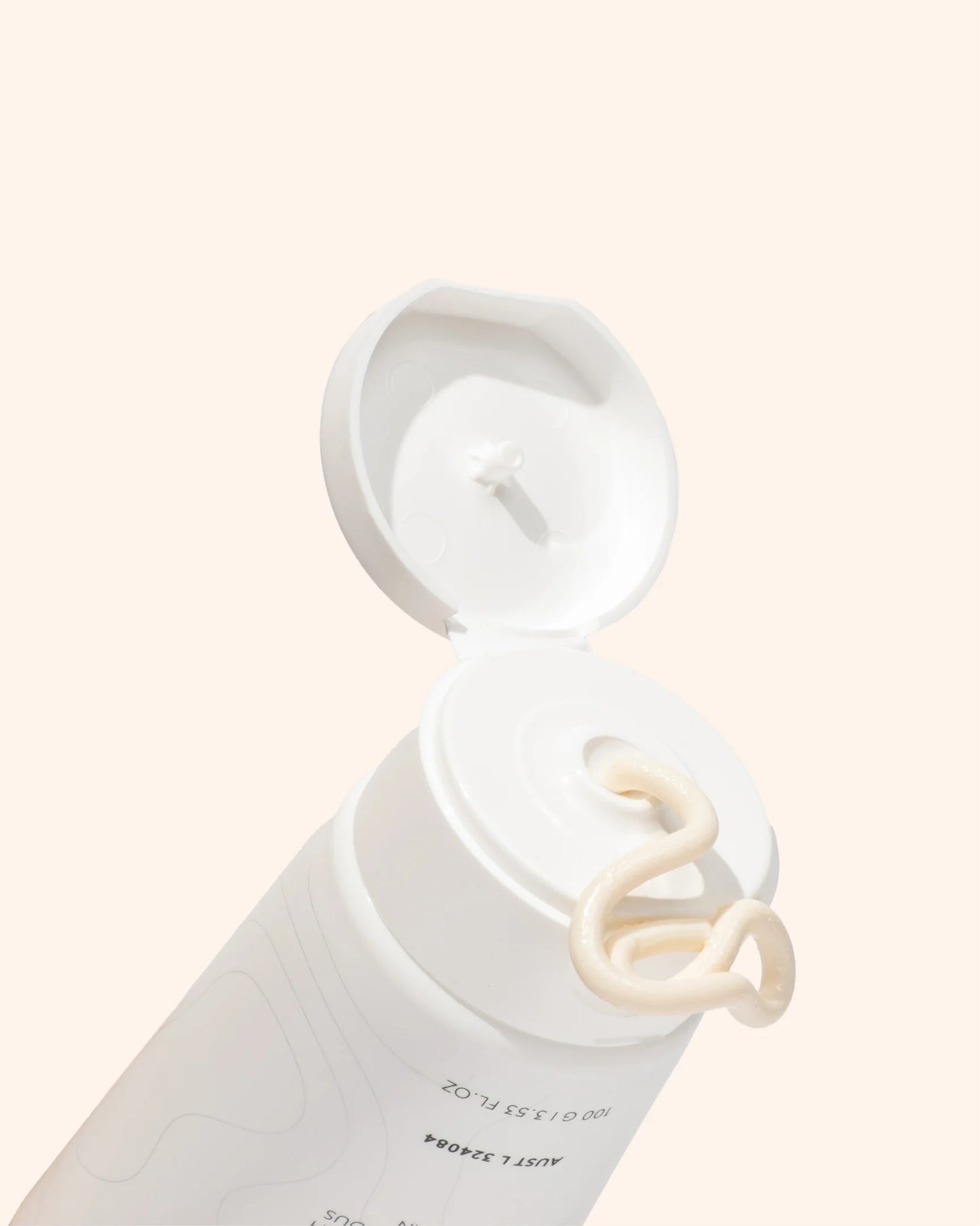People4Ocean Sun Care
SPF 50 MINERAL SUNSCREEN
SPF 50 MINERAL SUNSCREEN
Couldn't load pickup availability
A multi-award-winning, highly protective mineral cream with a pearlescent finish. The lightweight formula provides gentle broad-spectrum protection to the most sensitive skin and young children, while enhancing skin moisture and glow with organic coconut oil. Protects against the full spectrum of UV rays, airborne pollution and blue light damage. Very lightly scented with proprietary essential oils. Reef-safe, vegan and nourishing.
DETAILS
DETAILS
- 100g.
- Certified reef-safe.
- Vegan.
- Nourishing.
- Pregnancy and baby safe.
- No white cast.
- Australian made.
HOW TO USE
HOW TO USE
Shake and knead tube before use.
Apply liberally and evenly to all unprotected areas before exposure to the sun. Insist on sensitive areas (face, cleavage, top of shoulders, hands and feet, back of ears and neck). A little goes a long way! We don't dilute our sunscreens, resulting in richer, more concentrated creams than conventional sunscreen lotions. Apply a pea size amount at first and rub evenly to see how much product is ideal for your skin type.
Re-apply frequently, especially after swimming, sweating, or towelling. Avoid sun exposure between 11am and 2pm. Wear protective clothing and a hat. Use sun protection daily and all-year round, even on cloudy days. A good SPF routine is your best defence against premature signs of ageing and skin cancer.
INGREDIENTS
INGREDIENTS
Active: EcoCertified Non-Nano Zinc Oxide 225mg/G. Excipients: Caprilic Capric Triglyceride°, Castor Oil°, Candelilla Wax, Coco-Caprylate/Caprate°, Coconut Oil°, Tocopherol Acetate°, Polyglyceryl-3 Polyricinoleate°, Lavender Oil*, Ylang Ylang Flower Oil*, Patchouli Leaf Oil*, Vetiver Root Oil*, Geranium Oil*, Isostearic Acid°.
*Natural | °Organic
GOOD TO KNOW
GOOD TO KNOW
Delivers unstoppable-glide for effortless and even application.
Solves the greasy, heavy, sticky feel of many mineral sunscreens thanks to non-comedogenic botanicals and micronised (non-nano) zinc technology.
Allows all skin types, even oily-prone, to enjoy the safest sun protection, even under layered makeup.
Removes the worry of chemical loaded, hormone-disruptive SPF alternatives and allows you to fully invest in a lifetime of healthy sun-proofed skin while keeping your body and our oceans toxin-free.
Australian made, certified reef-friendly, vegan, pregnancy and baby safe.
THE MAKER
THE MAKER
Founded by marine biologists in the search for high-performance natural sun protection, People4Ocean
sunscreens deliver on quality and sensory, while excluding all skin and ocean pollutants.
People4Ocean is on a mission to protect, nurture and restore the beauty and wellbeing of people and oceans. Merging marine and dermal sciences, we pioneer clean, inclusive and sustainable sun care.
Founders Louise Laing and Austin Laing-Herbert met on the Great Barrier Reef while studying marine biology. After obtaining their Masters degree from James Cook University, they expatriated to the Indian Ocean and spent the next 5 years restoring coral reefs in Mauritius and Seychelles.
In 2016, new scientific findings made them question the health and environmental safety of ingredients used in chemical sunscreen. Further research led them to believe that most sunscreen ingredients are contributing to marine pollution and the global reef crisis. Laboratory testing showed that exposure to sunscreen chemicals can inhibit and alter the growth of coral juveniles, is toxic to seven coral species and is likely to induce coral bleaching in the wild, further increasing reef sensitivity to climate change. Similar
impacts can be found on human health, such as endocrine disruptions and bioaccumulation in reproductive organs and tissue.
In 2018, they returned to Australia and co-founded People4Ocean Sun Care. Ever since they have been on a mission to bring fundamental change to the sun care industry, by phasing out skin and ocean polluting
ingredients, to better protect people and help our oceans in the process. They continue their work as reef scientists, consulting on reef conservation projects in Fiji, French Polynesia and the Great Barrier Reef.
SHARE









